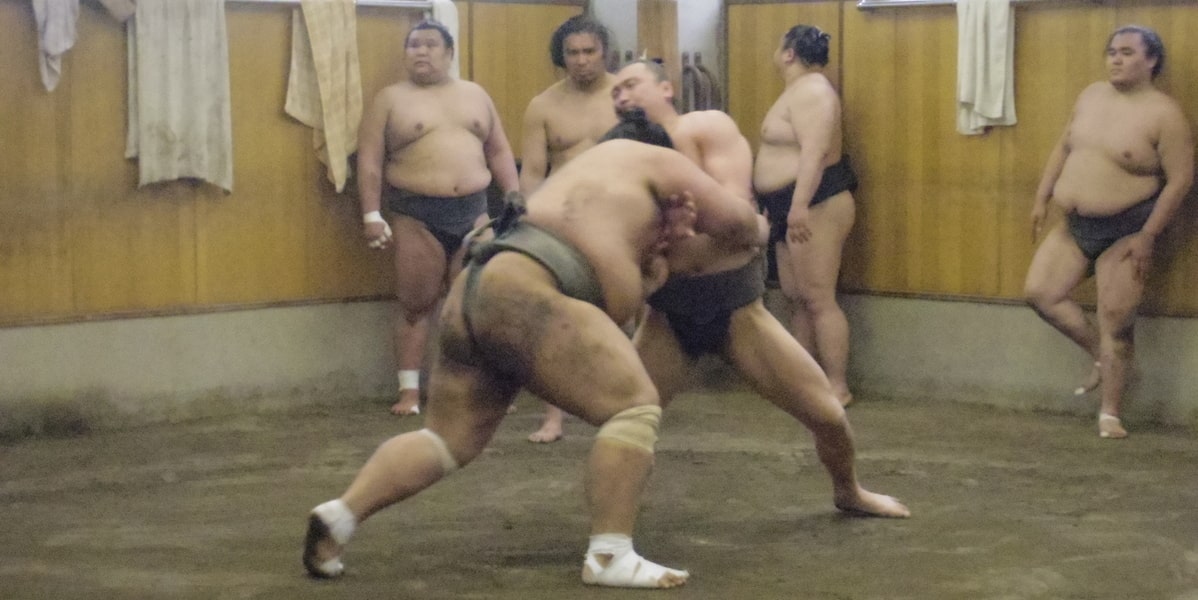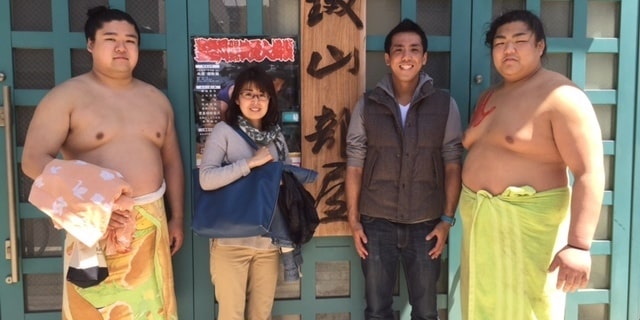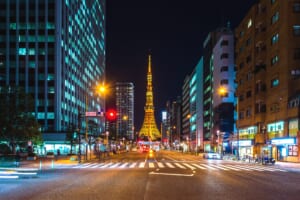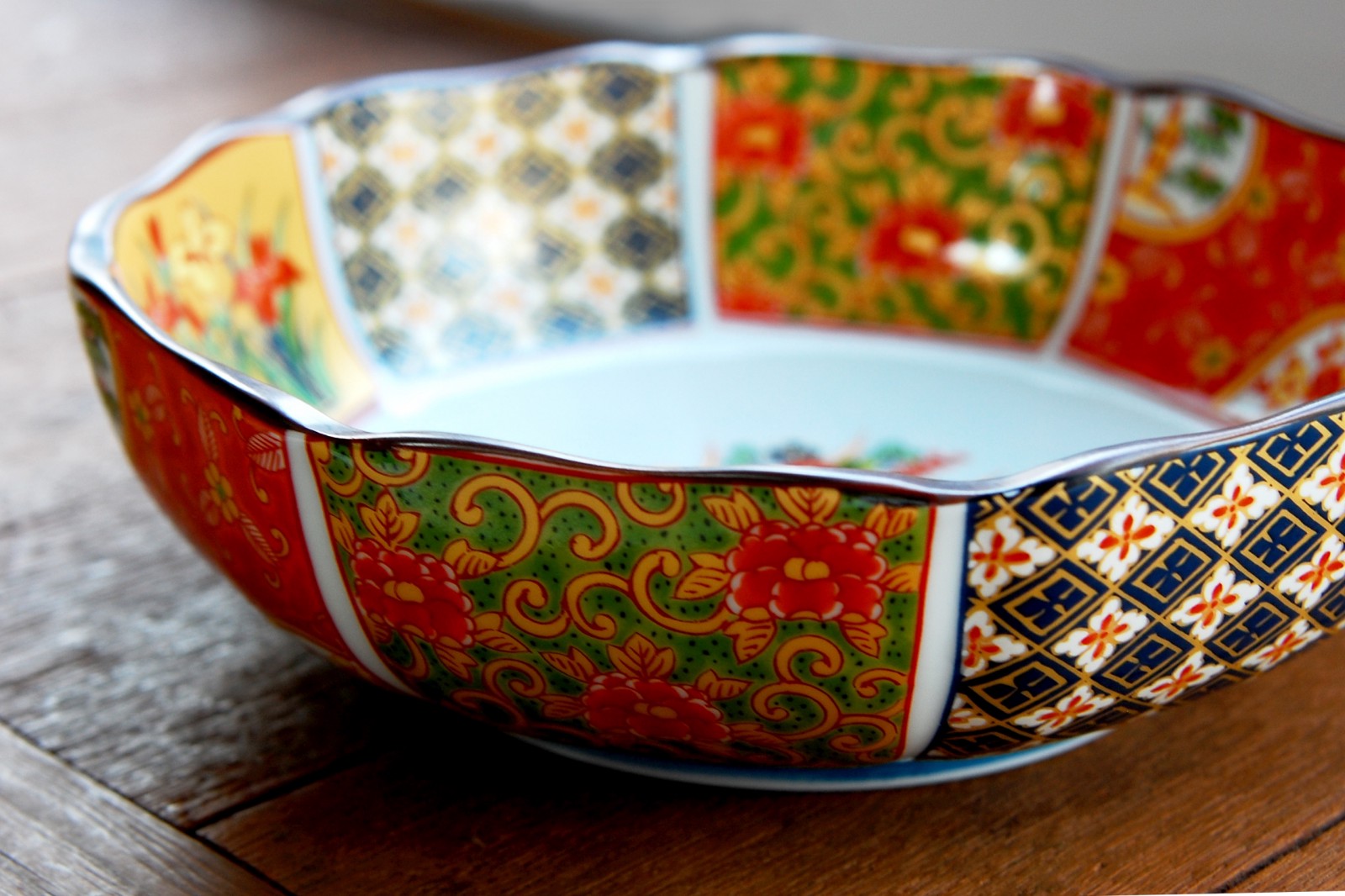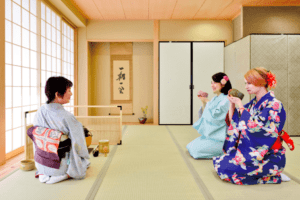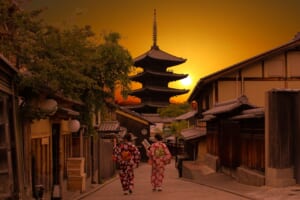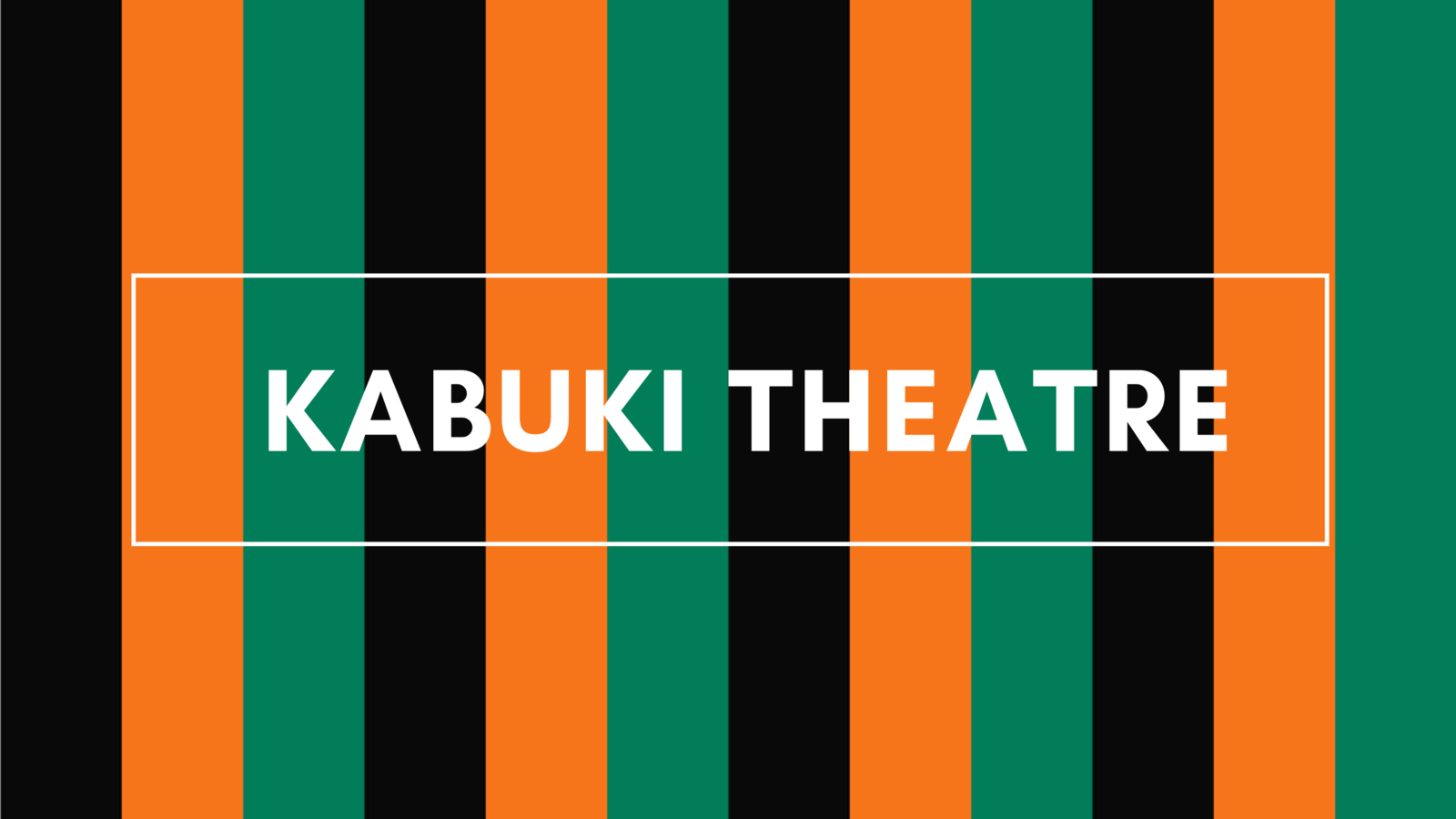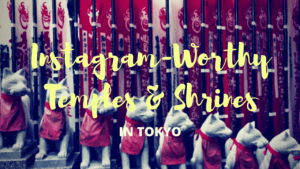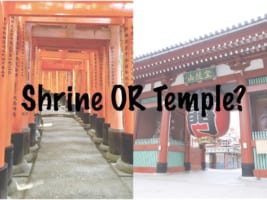How to Watch Sumo in Japan
Enjoying Sumo tournaments, wrestlers training and tours in Japan
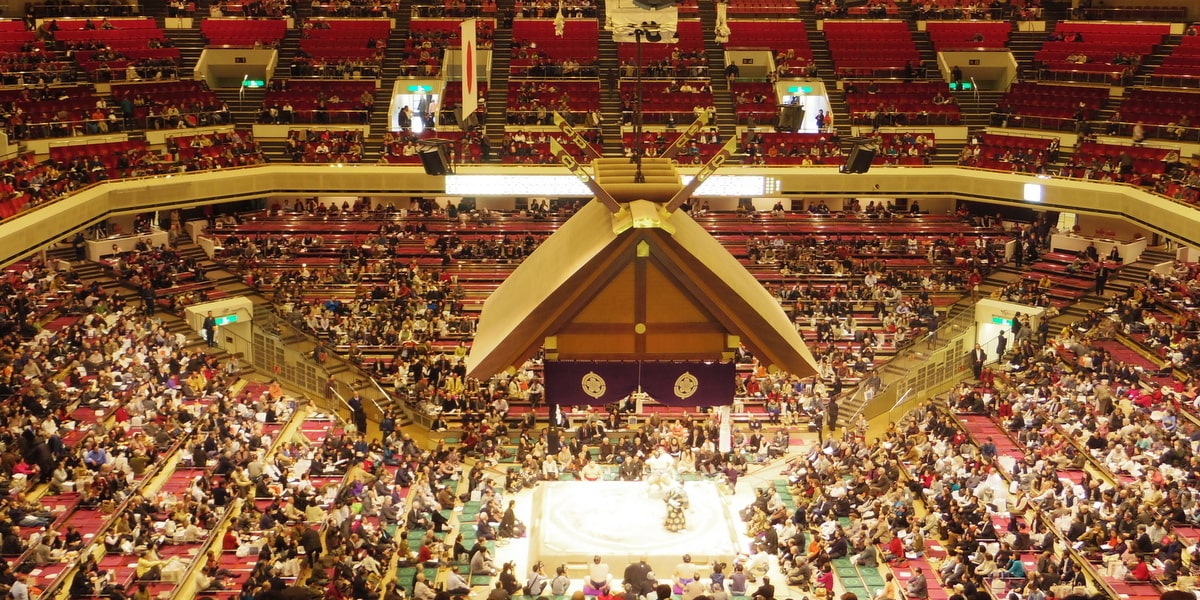
Sumo wrestling. It is arguably one of the first things that will pop up in your head when you hear “Japan”. It is extremely popular among foreign visitors and for a good reason. It is such a unique and odd sport in comparison to any other contemporary sport around.
It is the Japanese national sport, and although there are countries where you can see Sumo wrestling being played at an amateur level, you will be able to see a professional Sumo match only in Japan.
It has a long history and strong ties with the Shinto religion. Many of its rituals can still be seen when going to a Sumo match.
In this article, I will show you the basics of Sumo wrestling such as history, culture, and rules. For those who are interested in going to a Sumo tournament, I will also show you the schedule, the venues, and how to get tickets.
I hope you enjoy it!
*Please note that this article contains affiliate links.
<<Book here for Tokyo Sumo Tournament Tour in January, May and September!!!>>
1. History
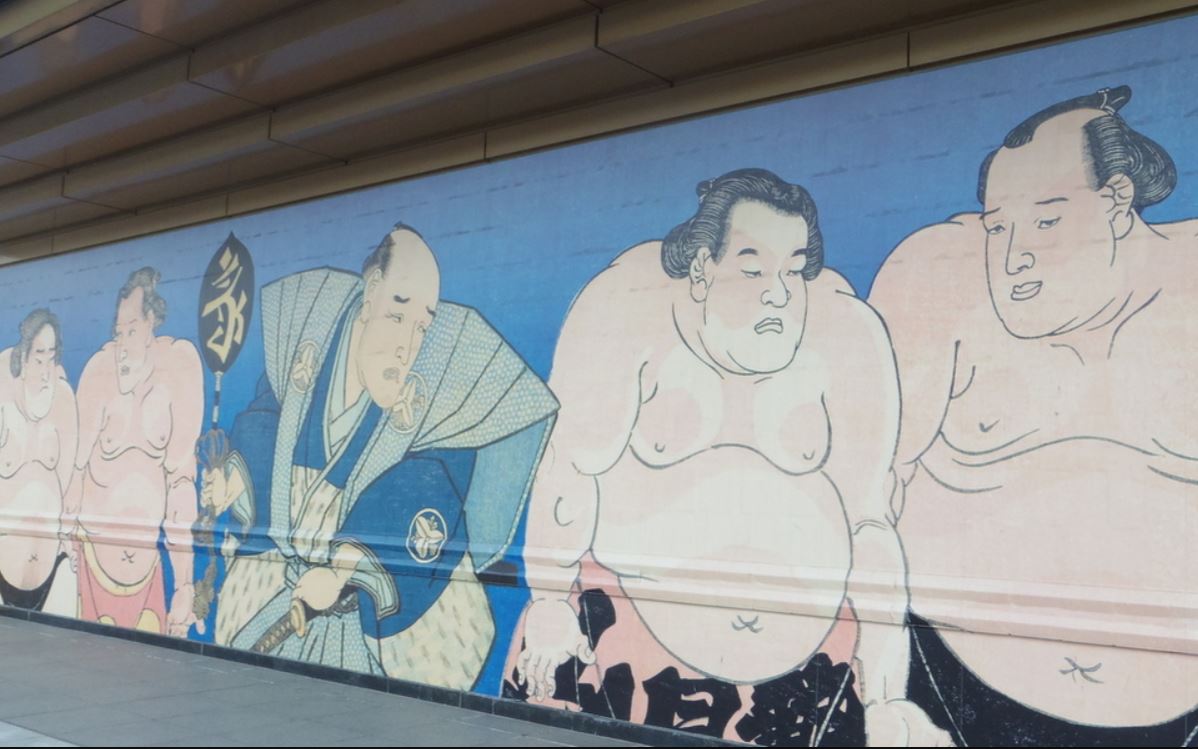
As I stated previously, Sumo wrestling has a very long history with strong ties to the Shinto religion.
There can be found mentions of the origins of Sumo in the “Kojiki”(古事記) and “Nihon Shoki”(日本書紀) which are the oldest literary works in Japan, believed to be written during the early 8th century.
What is written here is basically Japanese mythology, describing a battle between “Kami” (Shinto gods) to decide possession of territories, but there are also records about ritual fights between mortals taking place as far back as 23 B.C. In prehistoric times, these fights were held in front of the emperor and said to be held until one of the fighters died.
But along with the passing of time, the format of Sumo also went changing(no more killing). In the 8th century, Sumo tournaments were held once a year as a trial for selecting royal guards. But at the same time, Sumo matches were also held as a ritual in Shinto shrines to predict the upcoming agricultural and fishery outcome.
This duality of “Physical strength” and “Shinto ritual” between these two types of Sumo was apparent at first but started to blend together, especially around the Edo-period. Sumo wrestling had changed from a “force recruiting method” for the Daimyo(lords) to an “entertainment event” for the masses. All this while incorporating the Shinto rituals.
Most of what Sumo is as we know it now was created around this time.
Nowadays, Sumo is known for both the athletic competitive side as the national sport as well as the Shinto ritual side as one of the most important Japanese culture. It is because of this duality that Sumo has become one of the most popular attraction points in Japan for foreign visitors.
2. Rules
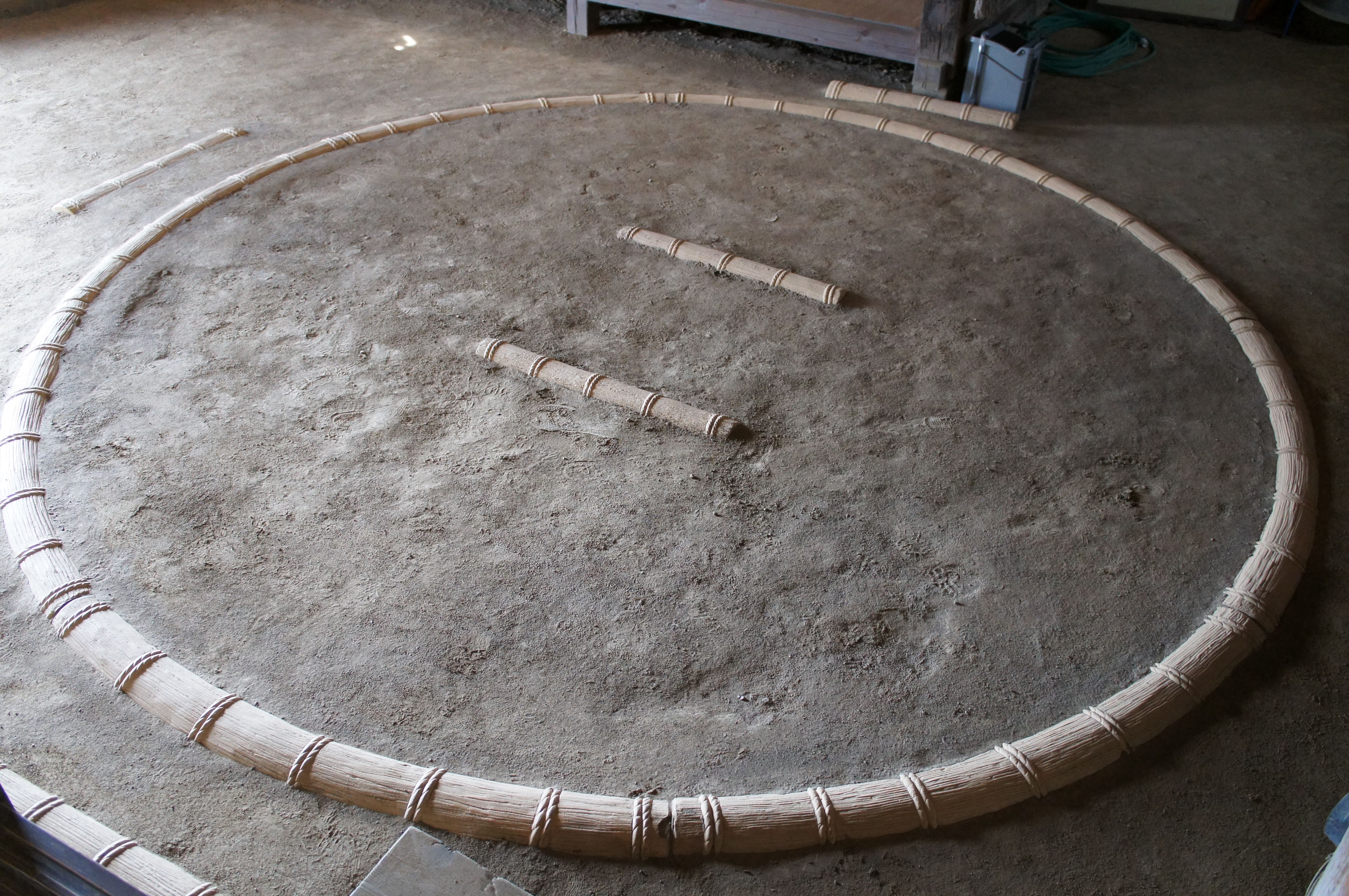
For those who are not very familiar with how Sumo wrestling works, here are the basic rules.
First, let’s talk about appearances. A Sumo wrestler, known in Japan as “Rikishi”(力士), can only wear a “Mawashi” (廻し) during a match. A Mawashi is a silk belt that is about 30 feet long that is wrapped around your waist.
A Rikishi’s hairstyle is also predetermined. the hairstyle that you see on Rikishi or in samurai movies is called “Mage”(髷). There are two types of Mage in Sumo which are “Oicho-mage” for high-ranked Rikishi, and “Chon-mage” for lower-ranked Rikishi.
Now let’s talk about the match rules. A Sumo match consists of only 1 round with no time limit. The matches are always 1 vs 1. Whoever steps out of the “Dohyo”(ring of 4.55 m of diameter) first, or touches the ground with any part of the body other than their feet, loses. A Sumo match usually lasts a few seconds.
The techniques used to defeat the opponent are by throwing, shoving, or pushing the opponent. There are officially 82 “Kimarite”(決まり手) which means “ways of beating an opponent”. You cannot punch(use a closed fist), pull the hair, poke the eyes, or grab the opponent’s throat.
Other ways of being disqualified from a match are by not appearing to the match or by not wearing your Mawashi in a proper way.
3. Ranks
The Ranks in Sumo are called in Japanese “Banzuke”(番付), and there are 6 official ranks which are the following(from high-rank to lower-rank).
- Maku-uchi(幕内)
- Juryo(十両)
- Makushita(幕下)
- Sandanme(三段目)
- Jonidan(序二段)
- Jonokuchi(序ノ口)
The Maku-Uchi consist of the top 42 Rikishi and these 42 are divided into 5 sub-ranks which are(from highest to low) the Yokozuna(横綱), Ozeki(大関), Sekiwake(関脇), Komusubi(小結), and Maegashira(前頭). These ranks are determined not only by your achievements but also by your relative strength compared to the other Rikishi. This means that a Rikishi’s rank can be promoted or demoted depending on other Rikishi’s results.
the most prestigious rank is, of course, the Yokozuna. You must at least win 2 major sumo competitions in a row to first be considered. This means, there could be times where there are several Yokozuna, and there can be times where there are no Yokozuna. But usually, there’s one or two Yokozuna, which shows how difficult it is to win two competitions in a row.
If you have seen footage of Sumo on TV, it’s most likely you saw a match within the Maku-uchi rank.
By the way, when a lower-rank Rikishi beats a higher-rank Rikishi, it is called a “Ban-kuruwase”(番狂わせ) which literally means “ranks going crazy”.
4. Rituals
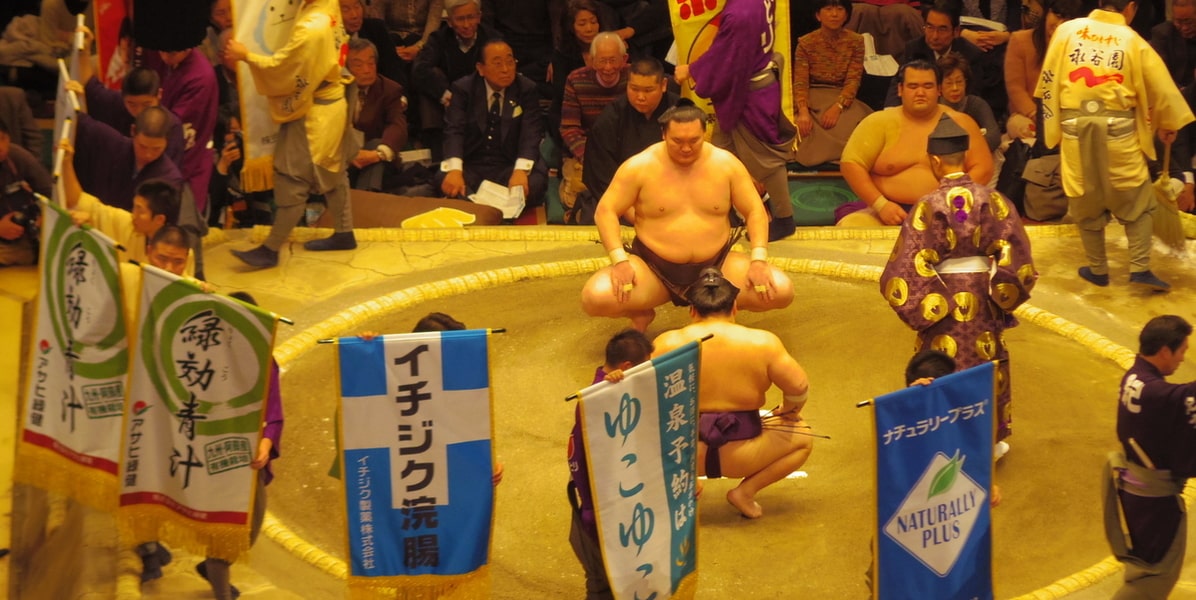
As I stated previously, Sumo is heavily tied to the Shinto religion, and there are still many rituals that take place before, during, and after a tournament.
Before a tournament:
the day before a tournament begins, there is a ceremony called “Dohyo matsuri”(土俵祭り). The Dohyo is purified by opening a hole in the middle of it and placing salt, cleansed rice, dried chestnut, dried kelp, dried cuttlefish, and nutmeg berry in the hole along with Japanese Sake as an offering for the gods.
During the tournament:
Now, what happens during the tournaments. There is a protocol that every Rikishi has to follow before every match begins.
The first thing a Rikishi does after entering the Dohyo is a ritual called “Shiko”(四股). They raise one of their legs and stomp on the Dohyo with all their strength. they do this several times to ensure that bad spirits stay underground.
After the Shiko, the Rikishi will go to the side of the ring to purify their mouth with water called “Chikaramizu”(力水). Then they take a handful of salt and throw it to the Dohyo for cleansing.
After purifying the Dohyo, the Rikishi will face each other and do what’s called “chirichozu”(塵手水). From a squatting position, they will clap their hand once and spread their arms wide to show their opponent that they are empty-handed.
After the match is over, the winning Rikishi will receive an envelope with the prize. Here they will make a hand gesture to thank the 3 gods of victory.
5. Yearly schedule
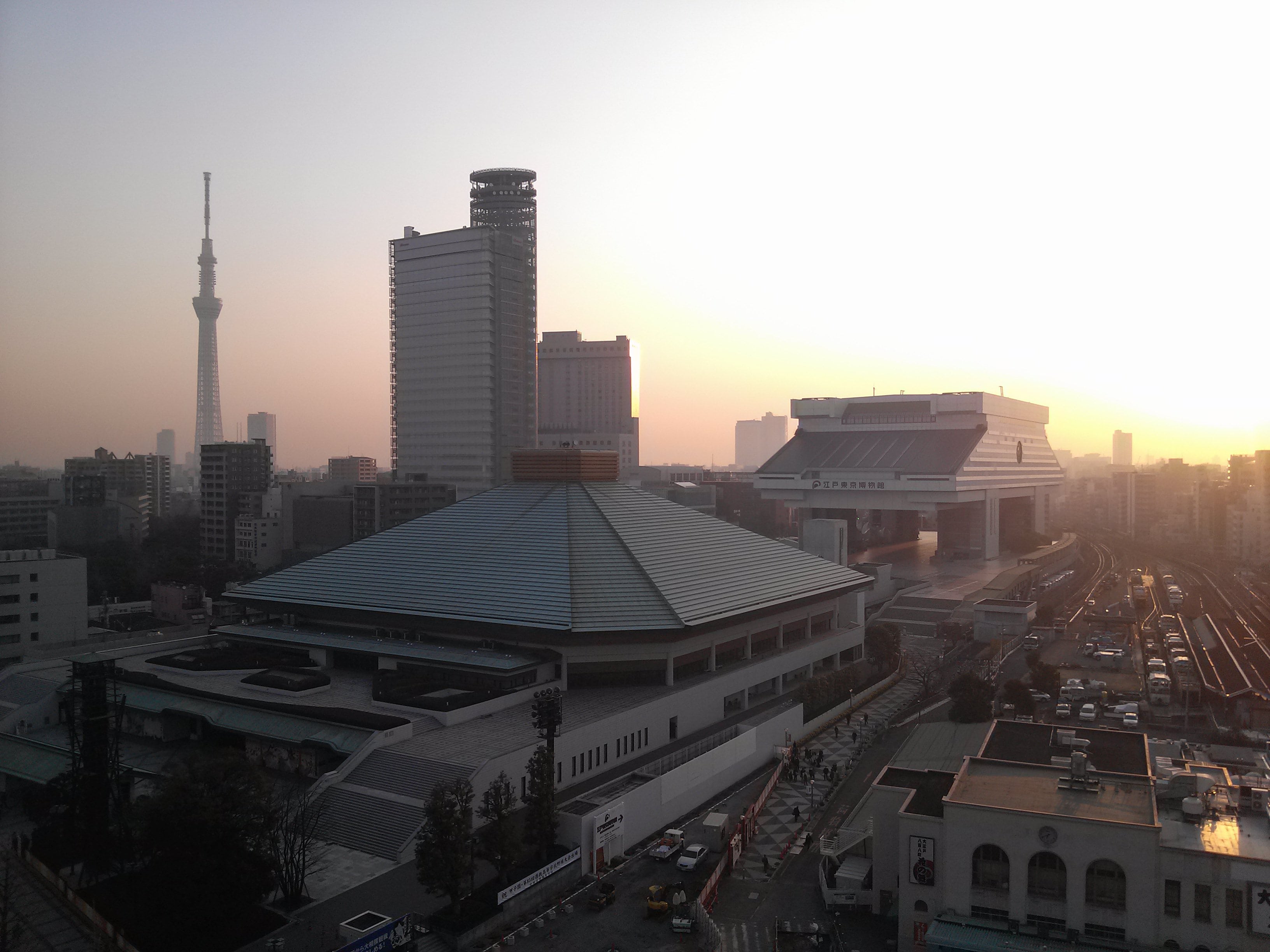
There are 6 main Sumo tournaments takin place during the year called “Hon-basho”(本場所). These tournaments take place during the odd-number months of the year(Jan, Mar, May, Jul, Sep, and Nov.). Three of those are held in the famous Kokugikan(国技館) in Ryogoku, Tokyo. The other tournaments are held in Nagoya, Osaka, and Fukuoka.
- January Tournament: Held in Tokyo (Ryogoku Kokugikan Sumo Arena).
- March Tournament: Held in Osaka (Osaka Prefectural Gymnasium).
- May Tournament: Held in Tokyo (Ryogoku Kokugikan Sumo Arena).
- July Tournament: Held in Nagoya (Aichi Prefectural Gymnasium).
- September Tournament: Held in Tokyo (Ryogoku Kokugikan Sumo Arena).
- November Tournament: Held in Fukuoka (Fukuoka Convention Center).
Each tournament lasts 15 days, each Rikishi having 1 match per day. At the end of the tournament, whoever has more wins is the champion. And if there’s a tie, there will be a tie-breaking match in the end to determine the champion.
6. How to watch a Sumo match
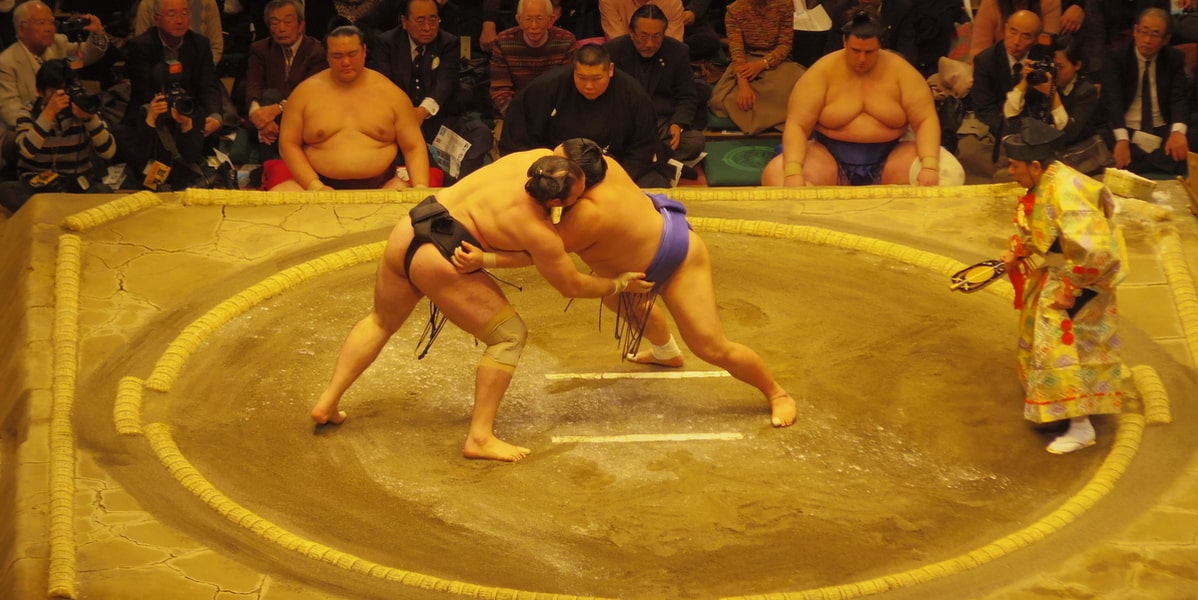
A day at the Sumo tournament
First of all, a day in a Sumo tournament is pretty long if you want to watch the entire thing. the venue opens at 8 am, and the first match will start as early as 8:30 am. The matches are programmed to have the lower ranked Rikishi matches first and as time goes by the higher-ranked matches start to appear.
This means that if you go to the venue at 8 am, you won’t see that many people yet. At about 4 pm is when the Maku-uchi Rikishi matches begin and you will see the venue fully packed. Usually, all matches will end by 6 pm.
Sumo tournament venues have many restaurants, bento shops, and souvenir shops where you can get exclusive Sumo souvenirs. Since the price of the ticket includes all matches, you might as well go early and enjoy all that the venue has to offer.
Types of seats
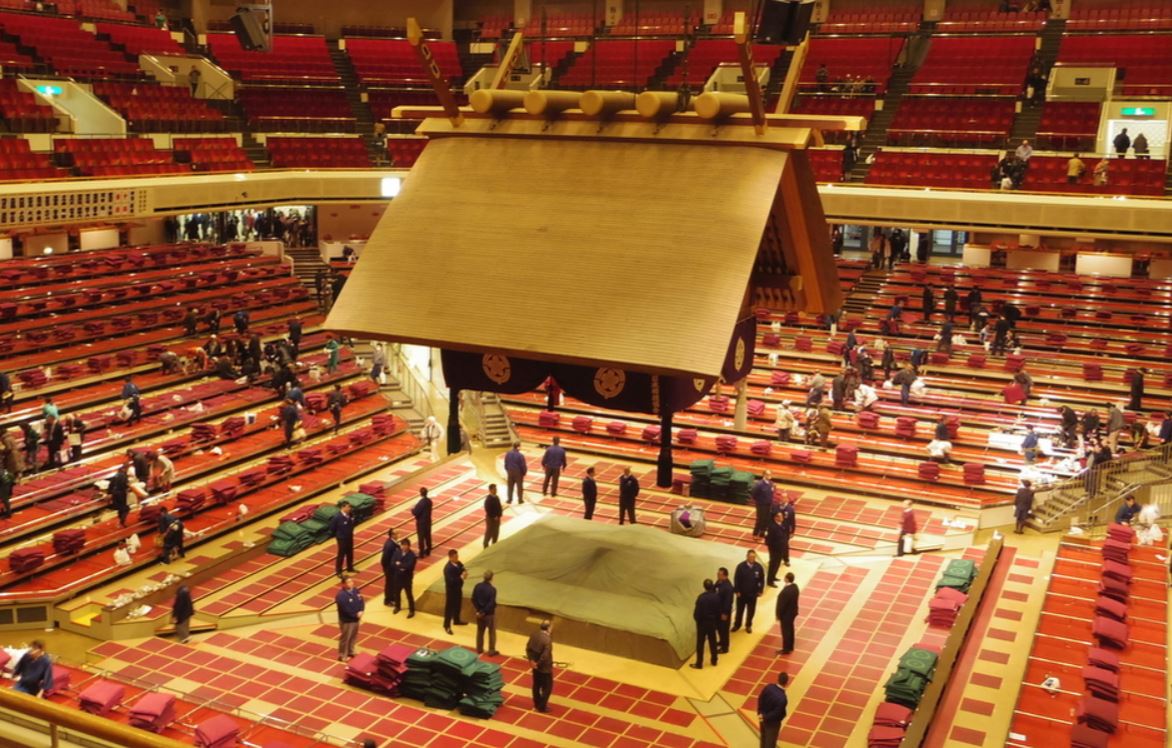
When it comes to seats, there are several types where you can choose from.
- Masu-seki(マス席): A tatami-style area where you can enjoy the Sumo matches as if you’re having a picnic. There are different sizes of Masu-seki, for 1 person ~4 people. At the Kokugikan in Tokyo, these seats are pretty close to the Dohyo, so its pretty exciting.
- Isu-seki(椅子席): these are the regular seats. At the Kokugikan, these are located on the 2nd floor so you will have a nice view from a higher location.
- Tamari-seki(溜席): These seats are right at the side of the Dohyo. they are also called “Sunakaburi-seki”(砂かぶり席) which literally means “seats where you’ll get covered in sand”. these seats are of course relatively expensive and scarce in number.
- Jiyu-seki(自由席): These are the free seats. They are the cheapest seats that you will find. You can only get tickets for these seats at the venue on the actual day of the event.
How to get tickets
There are 4 main ways you can get tickets for a day at the Sumo tournament. this is either online, via ticket selling shops, by going to the venue, or by taking a tour that includes tickets.
Online
To get tickets online, you can go to “Ticket Oosumo”. They do have an English website, although it is a little hard to understand at times.
Ticket Oosumo: http://sumo.pia.jp/en/
What I would recommend is to get your tickets using Japan Wonder Travel which is much easier and they can provide you not only the tickets but also answer your questions about the event. The following link will take you to the page for the Tokyo and Osaka tournament!
<<Book here for Sumo Tournament Tour in Tokyo!!!>>
Ticket Selling Shops
There are shops called “Ticket Pia” where you can get tickets for many types of events, including Sumo. The problem is that sometimes they don’t have English speaking staff available.
You can also get tickets at convenient stores, but the same language problem as Ticket Pia can occur.
At the venue
To go directly to the venue and buy your tickets is a sure way. The problem with this is that the venue is not opened 24 hours, and going all the way to the venue only to buy tickets doesn’t seem very efficient.
Taking a tour
This is actually what I would recommend for you to take. The good thing about taking a tour is that they will not only make sure to get your tickets but also you will get to enjoy a day at the Sumo tournament in ways that you wouldn’t be able to do alone.
The tour is completely in English, and the guide will answer any question you have about Sumo or any other question you may have about Japanese culture, or any question about traveling in Japan in general.
This tour is for the Tokyo tournaments which are in January, May, and September.
<<Book here for Sumo Tournament Tour in Tokyo!!!>>
Manners when watching
As long as you are dressed properly, are not too loud, and are respectful to the people around you, you shouldn’t have problems.
But there is one thing I would like to let you know before you go to watch a sumo match which is that there has been a “not such a good tradition” of people at the Masu-seki throwing the zabuton(cushion for sitting) when the Yokozuna loses. You might have seen this on TV or on the internet. This is actually something that the organizers do not indulge, and hope that people don’t do.
So I would appreciate it if you don’t do this even if locals are throwing their zabuton.
7. How to Watch Sumo Morning Practice
Lastly, I would like to recommend to you a tour for watching real Rikishi do their morning practice.
This is a great chance for you to see really up close the action and intensity of this sport and how Rikishi prepare physically and mentally for their upcoming matches.
This tour also includes an English speaking guide who will explain everything that’s happening and will answer any kind of questions you can come up with!
If you are in Tokyo, but not during a tournament season, then this is perfect for you!
<<Book for Tour to Sumo Stable and Watch Sumo Morning Training!!!>>
I really hope you enjoyed this article about how to watch sumo in Japan.
Being able to go watch a Sumo tournament is really something you can only do in Japan and as you can tell by its popularity, it is a worthwhile experience.
If you weren’t that interested in Sumo, I hope I was able to spark interest in you. And If you are already interested in Sumo, I hope I was able to add something to your interest.
If you are interested in Japanese culture, check out these other articles!
▽Related Articles▽
▼Editor’s Picks▼
Written by
Born and raised in Costa Rica, I started living in Tokyo from college. I love traveling within Japan & around the world. Since I wasn’t born in Japan, I know the cultural impact that you can get when visiting Japan for the first time and what you might be worried about before your trip. And I’ve lived long enough to somewhat understand the nuances of the Japanese culture that make this country such an attractive place to visit. Hopefully I can provide to you both the information you’re looking for and the information you didn’t know you needed to know.





